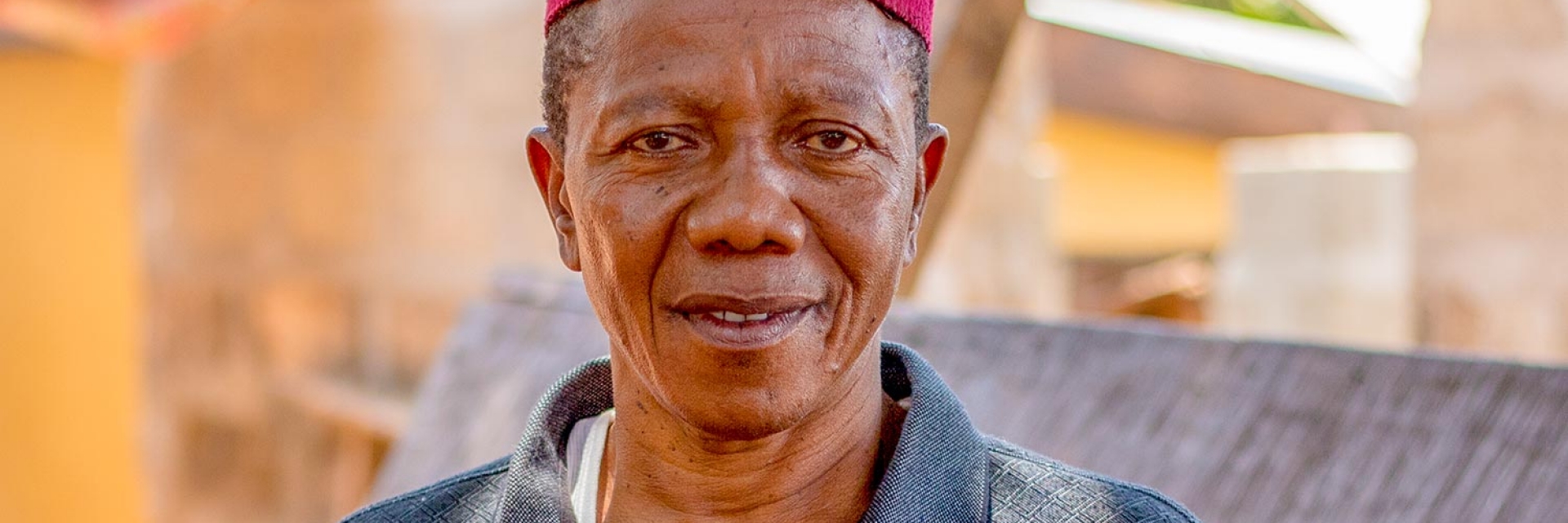
Following a deadly mudslide in Freetown, Sierra Leone, Chief Kabay’s community was one of the first to house those displaced. He’s thankful for the help his community received from Canada in meeting the needs of everyone, particularly with respect to safe drinking water. Image: CARE
One night, one moment: that’s all it took to change the lives of many
“The landslide changed everything for our community in just one night,” explained Chief Kabay of the Kamayama community in Freetown, Sierra Leone. “All of our water points were destroyed with the force of the flooding. We had too much water around us, but the water was so dirty we could not use it for drinking”.
Two days of heavy rains in August 2017 led to extensive flooding and a massive landslide devastating the homes of thousands of people in the outskirts of Sierra Leone’s capital. More than 500 people lost their lives and close to 20,000 were affected.
Chief Kabay’s community was one of the first to receive those displaced, welcoming more than 1,950 families affected.
With funding from the Canadian Humanitarian Assistance Fund (CHAF), the Humanitarian Coalition, through its member CARE Canada, responded to the flooding with a range of support, including water, sanitation, hygiene, household items and unconditional cash support for the most vulnerable households.
“CARE was here on the morning right after the flooding, working with us to help meet our needs,” says Chief Kabay. “On the day CARE installed the water tanks, they filled them once and they were empty in just a few hours. They came back four times that day to refill the tanks and make sure everyone had access to water.”
After the initial response, CARE continued to provide water in the months that followed.
“The water helped us so much. We had no shortages the whole time that CARE was providing water for the tanks. Nobody had to go to the dirty stream to fetch water, and we didn’t have to worry about getting sick”.
Now, the communities continue to use the tanks for water storage, and are working on longer term solutions to water access, including rebuilding nearby water points.
Read more about CARE’s response to this crisis, and find out how you can help survivors of future disasters.